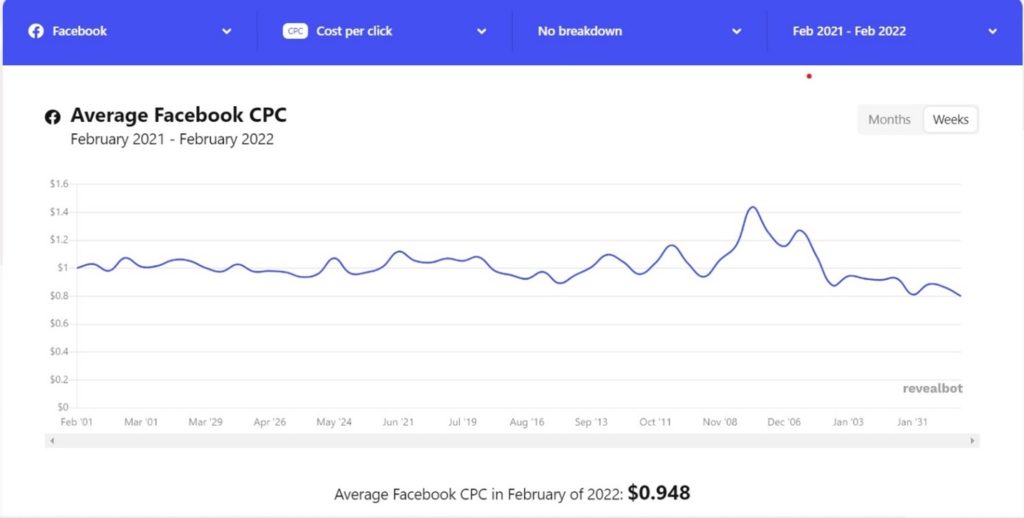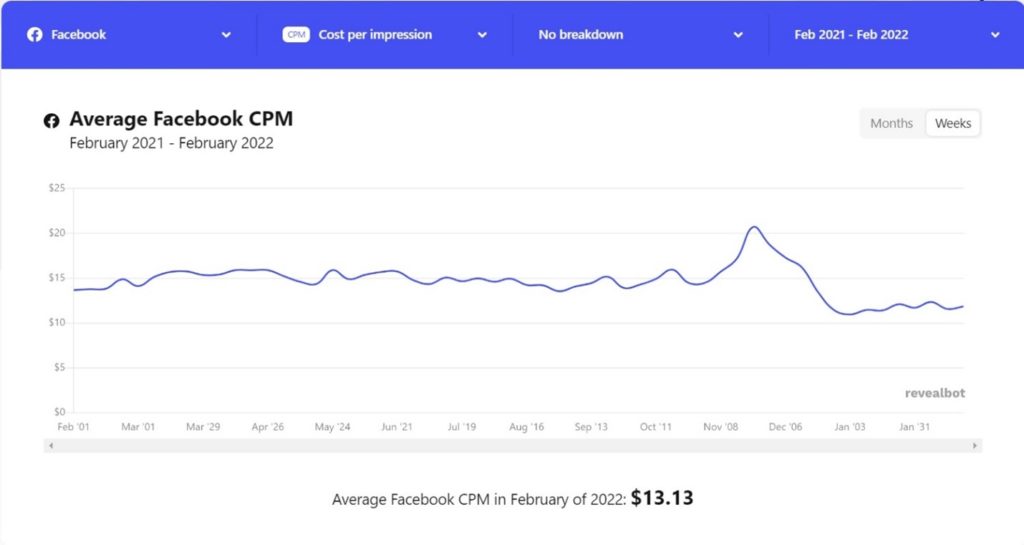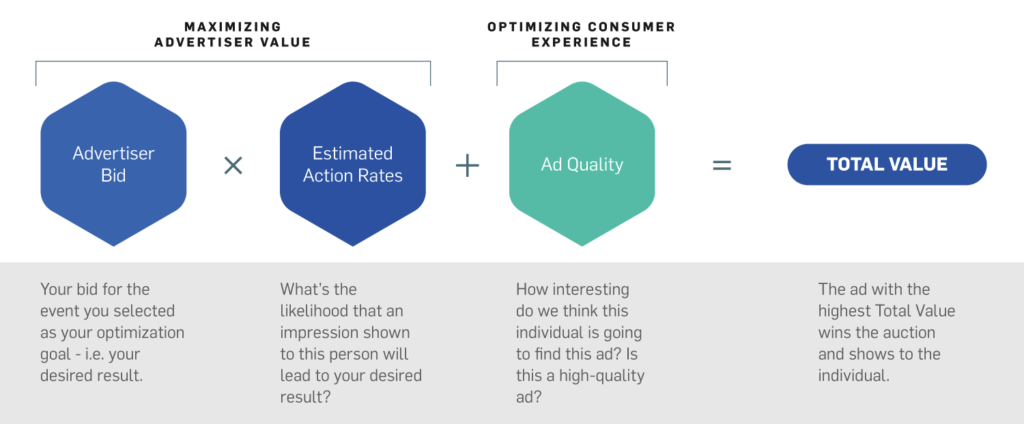What elements affect the price of Facebook marketing?
Posting on Facebook is an essential part of a business’s strategies. Doing paid marketing is another alternative that the social media giant gives companies. Approximately 90 million small businesses do their marketing propaganda through Facebook.
These companies spend an average monthly total of between 200 to 800 dollars monthly, which results in impressive figures in the earnings of Facebook.
Without a doubt, the number of companies using the same platform to promote their brands or products makes it incredibly competitive. However, this competition only accomplishes one thing: increasing marketing costs each year. It means that if you have an independent website, that is, you are not part of Zona Shoppers, then you must increase your marketing budget every year.
Here is a guide of the types of campaigns you can make and an approximation of the price you could be paying. There is no doubt that Zona Shoppers gives you the best offer; with us, you would save time and money.

Note: “When using the Brand Awareness objective, here’s how often people will see your ads.” (directly from Facebook)
[“Your ads will reach your audience up to two times every five days by default. That means that, over a four-week campaign, people will see your ads around ten (10) times. To learn more about frequency and its relationship with ad recall, read the Facebook whitepaper on frequency.“] Facebook
First, Let’s See How much does Facebook advertising cost?
At Zona Shoppers Academy, we want to be responsible for our audience’s information. Therefore, Facebook charges per ad change depending on many variants. However, we can give you an average of the prices to make your budget or estimate how much you will invest.
1. Cost Per Click
Advertising on Facebook costs, on average, $0.948 per click.
How It’s Used
CPC shows how much, on average, each link click costs you. CPC is a metric used in the online advertising industry for benchmarking ad efficiency and performance.
How It’s Calculated
The metric is calculated as the total amount spent divided by link clicks.

2. Cost Per Mille
The average price of CPM is about $13.13 per 1,000 impressions.
How It’s Used
CPM is often used to compare performance among different ad publishers and campaigns.
How It’s Calculated
CPM measures the total amount spent on an ad campaign, divided by impressions, multiplied by 1,000. (Example: If you spent $50 and got 10,000 impressions, your CPM was $5.)

3. Page Likes Ads
Ad campaigns focused on gaining likes or app downloads can expect to pay $1.07 per like and $5.47 per download, on average.
Page Likes ads help you reach people who may like your page. If your goal is to increase brand awareness, these ads are a way to promote your page to people interested in your content or businesses like yours.
4. Average cost per lead (CPL)
Cost per lead (CPL) is the total cost Facebook charges to help you acquire each lead. It is achieved through an ad, multiple ads, or advertising campaign. The approximate cost of the CPL is $5.92 for each lead.
How It’s Calculated
This metric is calculated as the total amount spent during the selected time period, divided by leads that occurred within the same time period. In some cases where purchases cannot be measured directly due to partial or missing data, statistical modeling may be used to account for some events.
Which are the elements of Facebook that influence your budget?
Advertising campaigns vary depending on the social platform they use, the amount invested, the type of target audience; in short, many elements influence advertising cost. However, we have chosen the five (5) factors that most influence Facebook advertising campaigns and many more. Each of these factors will help you understand and largely determine how much the budget should be for each hood.
Some of the elements that determine how much Facebook ads cost include:
Target Audience
The audience is your niche. The audience is the main character of your campaign. Therefore, when you define whom, your campaign is aimed at, you are limiting and delimiting areas that indicate that Facebook does specific searches. Let me explain, imagine you’re selling luxury handbags. These handbags are for a certain individual on a particular economic level. The price of these bags exceeds 20 thousand dollars. You want to sell them only in the state of New York because it is a local area to do custom shipping. But you don’t want to campaign for the entire state; you’re only interested in Manhattan. You decide that your target audience is women of a specific age within that geographic area. As you define your audience, so does your campaign’s price.
Tip: If you want to have an excellent outcome, you must know your ideal client (buyer persona). If you haven’t defined your ideal client, it’s time to do it. If you start a campaign without knowing your target, you will lose your money. Press to learn!
Advertising budget
Many people fail due to a simple detail; they don’t know how to calculate the budget to run their marketing campaigns. A reasonable budget helps your message reach the right audience, achieving more leads with a greater chance of a conversion.
Keep a limit on your budget. You can choose a daily minimum or maximum. The amount you choose will depend on the type of campaign you are interested in. However, investing too little daily will not give you the expected results. For example, let’s say you have a budget of $200 for two months, and you decide to make a daily investment of $5.00; unfortunately, it will not give you enough to meet expectations since you will only cover 40 days.
You can start with a small budget to not increase administrative costs. However, we must reiterate that a low ad budget provides fewer conversions due to performance limitations.
Ad bid
A bid is an amount you are willing to pay to promote interaction with the users. For example, you are paying $1.75 for each click. Facebook offers three(3)types of bidding: spend-based, goal-based, and manual.
(This information was obtained directly from Facebook)
Spend-based bidding
Focus on spending your full budget and getting the most results or value possible.
Lowest cost: Maximize delivery and conversions you can get from your budget. For example, an event planner may use the lowest cost to get as many people as possible to attend an upcoming music festival, where cost per attendance doesn’t matter.
Highest value: Spend your budget and focus on highest value purchases. For example, a florist may use the highest value to sell as many bouquets as possible, while focusing on selling more expensive bouquets to maximize value.
Goal-based bidding
Set a cost or value you want to achieve.
Cost cap: Strive to keep costs around the cost amount regardless of market conditions. For example, a retailer optimizing for purchases may set their cost amount to a cost per purchase that will keep them profitable on average. Note: Adherence to cost cap limits is not guaranteed.
Minimum ROAS (return on ad spend): Target a minimum return on ad spend for each bid. For example, if you want your budget of $100 to produce at least $110 in purchases (or a 110% return), you’d set your ROAS control at 1.100. Note: Adherence to minimum ROAS limits is not guaranteed.
Manual bidding
Control how much you can bid across ad auctions.
Bid cap: Set the maximum bid across auctions, rather than allow Facebook to bid dynamically based on your cost or value goals. Bid cap is meant for advertisers who have a strong understanding of predicted conversion rates and can calculate the right bid.
“To ensure that the winning ad maximizes value for both people and businesses, the winner of the auction is the ad with the highest total value.”
Facebook, About Ad Auctions

Advertising objective
To create a Facebook ad that gives you excellent results, you must choose from the following objectives.
Awareness
|
Objective |
Your business goal is to: |
|
Brand awareness |
Increase people’s awareness of your business, brand or service. |
|
Reach |
Show your ad to as many people as possible in your target audience. |
Consideration
|
Objective |
Your business goal is to: |
|
Traffic |
Send people from Facebook to any destination you choose, such as your website’s landing page, a blog post, app, phone call, etc. |
|
Engagement |
Reach people more likely to engage with your post. Engagement includes likes, comments and shares but can also include offers claimed from your page. |
|
App installs |
Send people to the store where they can download your business’s app. |
|
Video views |
Share videos of your business with people on Facebook most likely to watch it. |
|
Lead generation |
Collect leads for your business. Create ads that collect info from people interested in your product, such as sign-ups for newsletters, or have people give your business a call. |
|
Messages |
Connect with people on Messenger, Instagram Direct, and WhatsApp. Communicate with potential or existing customers to encourage interest in your business. |
Conversion
|
Objective |
Your business goal is to: |
|
Conversions |
Encourage people to take a specific action on your business’s site, such as having them add items to a cart, download your app, register for your site, call your business, or make a purchase. |
|
Catalog sales |
Show products from your ecommerce store’s catalog to generate sales. |
|
Store traffic |
Promote your brick-and-mortar business locations to people that are nearby. |
Once you choose your objective, you must select a specific goal, for example,
Brand Awareness
Facebook will show your ads to the audience most likely to remember your brand.
When to Use It: The Brand Awareness goal is to build a memorable brand. However, this needs a well-thought budget due it will need various campaigns. Also, these campaigns happen to be more valuable and costly.
Reach
It helps to optimize your ads for impressions. The primary purpose is to show your ads to as many people as possible within your target audience and budget limits. Therefore, it is excellent to get as much attention to your ads.
When to Use It: The Reach goal is excellent, for example, to bring awareness to events, turn connections into conversions, or make awareness of a product’s feature.
Traffic
The purpose is to drive traffic to your website, increase link clicks, or even increase visits to a landing page. Facebook will present your ad to people within your target audience who is more receptible to click or visit your page.
When to Use It: The Traffic goal is to send people to a specific site or menu.
Engagement
The main goal of your Facebook ad is to engage with your target audience. Therefore, Facebook will show your ads to the more inclined audience to engage with your ads.
There are three engagement types. Select which is better for your business.
It includes reactions, comments, shares, video views, and clicks. It helps build social proof on a post or ad. However, it is more of an organic method, where it needs previous engagements to make the post-engagement a success.
It works great if your main goal is to increase the number of followers on Facebook. However, you cannot use this method to grow your Instagram followers.
It may have a lower outcome than expected. If you are looking for many respondents, it is better to use Conversions.
When to Use It: The Engagement campaign objective is perfect for boosting your page fans, adding social proof to a post, or increasing sign-ups to a Facebook event.
App Installs
This is perfect if you have an app because it increases downloads.
When to Use It: The App Installs objective is an excellent method to promote your app.
Video Views
Facebook will prioritize showing your video to your target audience.
When to Use It: The Video Views objective is perfect for displaying a specific video or getting more likes on your Facebook Live replay.
Lead Generation
It allows you to add a contact form to your Facebook ad. You can customize the form to your needs to obtain more information from your audience.
When to Use It: The Lead Generation objective is ideal to obtain potential clients’ information.
Messages
It focuses on starting conversations with people in Messenger or Instagram Direct.
Tip: Make sure to monitor your inbox for incoming messages. People expect responses in a short period.
When to Use It: The Messages objective is excellent to establish a community, start chats, or for a Q&A section.
Conversions
Conversions are the best objective to reach people for specific actions. You can use conversions to make purchases or sign up for newsletters. For conversions, you will need:
- Install the Facebook pixel on your website.
- Install the Conversions API on your website. (this video can help you)
- Verify the domain for your website.
- Configure your events within the Events Manager.
When to Use It: The Conversions objective is excellent if you want to redirect people to your website to make a purchase, sign up, or lead.
Catalog Sales
Essential to create a catalog on Facebook. Excellent if your business is product-based and uses the Catalog Sales to show products to your target audience. You can make a dynamic product ad for this type of goal.
When to Use It: The Catalog Sales objective is an excellent choice to show potential clients your products.
Store Traffic
It is a great tool to drive traffic to your brick-&-mortar stores because Facebook will show your ads to people close to the location. Remember to specify the locations and hours of operation on Facebook.
When to Use It: The Store Traffic objective is excellent for driving traffic to multiple stores.
Ad placement
Ad placement also influences the cost of Facebook ads. With Facebook, your ads can appear in six places:
- Instagram stories
- Facebook desktop newsfeed
- Facebook Right Column
- Facebook messenger
- Audience network
The cost of marketing is on the rise; there is no doubt about that. One false move and your entire budget are sure to go. What do we mean by this, that you should study how you develop your marketing campaigns on Facebook and all platforms.
Many other factors affect the price of Facebook ads. You must be alert and obsessed with saving as much as possible without affecting the quality of your campaign. Facebook is not SEO! When you use their services, you know that they are not cheap, so you must know what you are doing very well.
You don’t need a magic wand; you need to either follow the rules and optimize or leave it to us, save a fortune, and forget about your worries!


